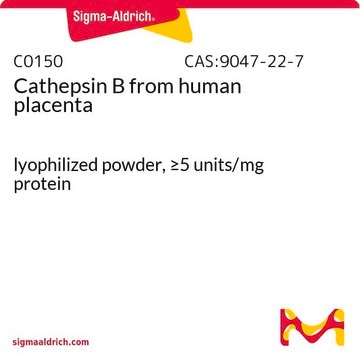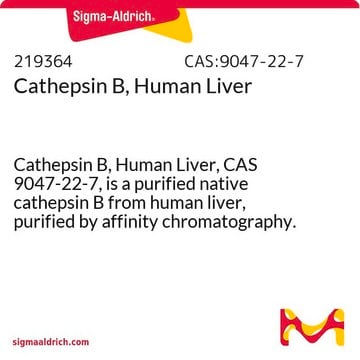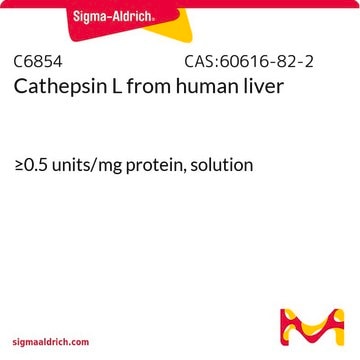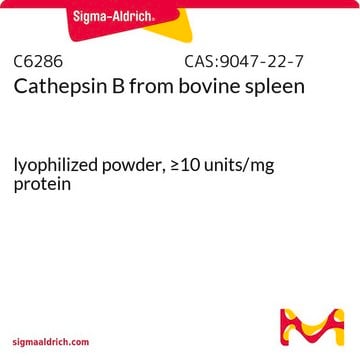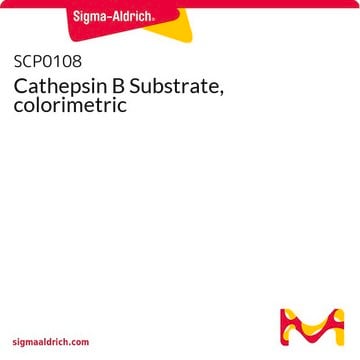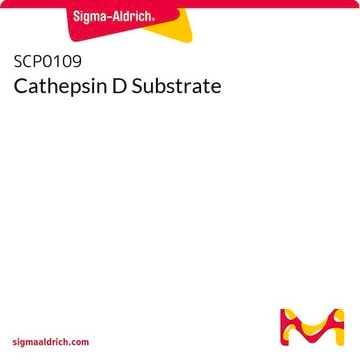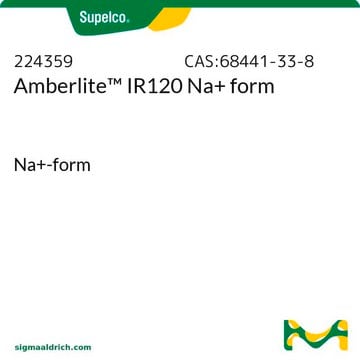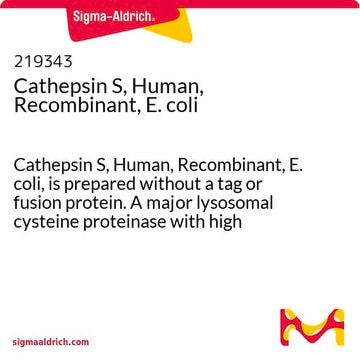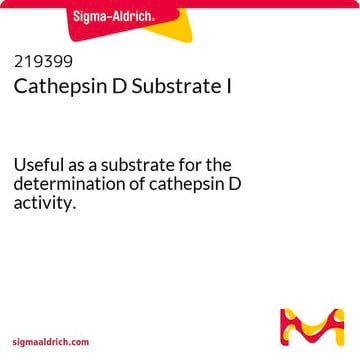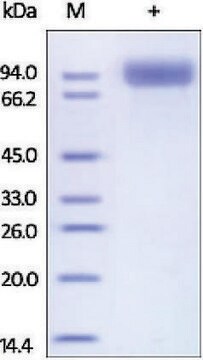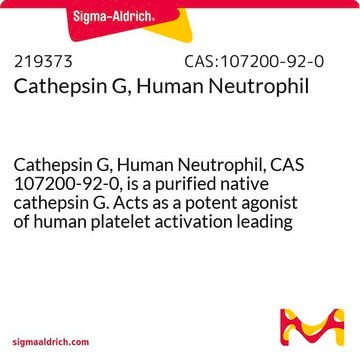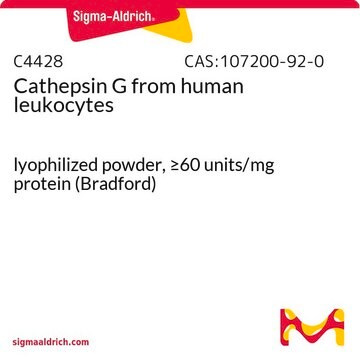This product is shipped at ambient temperature. This material is lyophilized from a solution containing sodium phosphate, pH 6.5. It may be reconstituted in approximately 80 ul water per 25 ug vial. Activation is not necessary.
C8696
Cathepsin D from human liver
lyophilized powder, ≥250 units/mg protein (E1%/280)
Sélectionner une taille de conditionnement
Sélectionner une taille de conditionnement
About This Item
Produits recommandés
Forme
lyophilized powder
Niveau de qualité
Activité spécifique
≥250 units/mg protein (E1%/280)
Poids mol.
~45 kDa
Couleur
white
Numéro d'accès UniProt
Température de stockage
−20°C
Informations sur le gène
human ... CTSD(1509)
Description générale
Application
Actions biochimiques/physiologiques
Autres remarques
Définition de l'unité
Forme physique
Inhibiteur
Produit(s) apparenté(s)
Code de la classe de stockage
11 - Combustible Solids
Classe de danger pour l'eau (WGK)
WGK 3
Point d'éclair (°F)
Not applicable
Point d'éclair (°C)
Not applicable
Faites votre choix parmi les versions les plus récentes :
Certificats d'analyse (COA)
Vous ne trouvez pas la bonne version ?
Si vous avez besoin d'une version particulière, vous pouvez rechercher un certificat spécifique par le numéro de lot.
Déjà en possession de ce produit ?
Retrouvez la documentation relative aux produits que vous avez récemment achetés dans la Bibliothèque de documents.
Les clients ont également consulté
-
At what temperature is it shipped? How to reconstitute it? Is it active or to be activated?
1 réponse-
Utile ?
-
Filtres actifs
Notre équipe de scientifiques dispose d'une expérience dans tous les secteurs de la recherche, notamment en sciences de la vie, science des matériaux, synthèse chimique, chromatographie, analyse et dans de nombreux autres domaines..
Contacter notre Service technique

